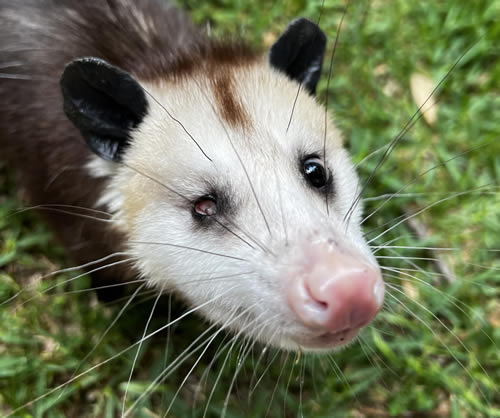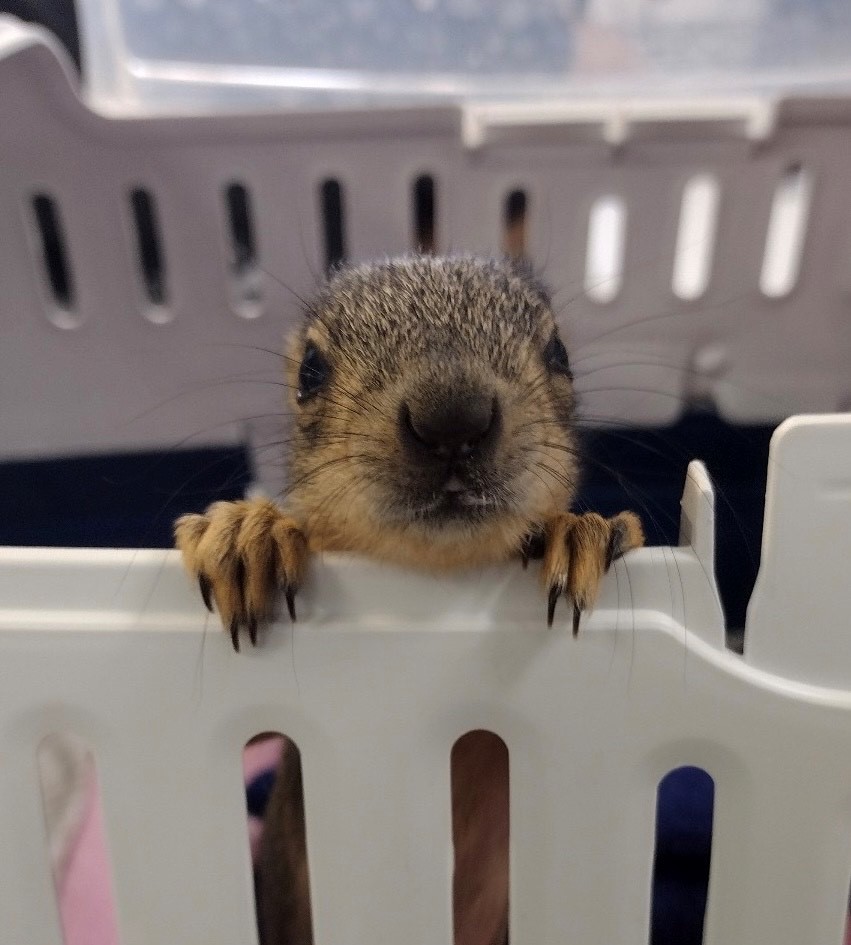Written by Deb Near, ACP Supervisor

It’s a brand-new year! For many of us this is a chance to start fresh, create a new routine, or just simply, be better. At TWRC Wildlife Center, we are always looking for ways to be better, especially when it involves our wild friends. Join us this year in our resolution to help wildlife by choosing sustainable, wildlife-friendly options.
So, what are some things we can do to be more sustainable? There are five easy steps everyone can take towards a more sustainable lifestyle: refuse, reduce, reuse, repurpose, recycle, in that order. Here are a few practical suggestions that you can take to heart and implement throughout this coming new year.
Refuse or Reduce
The first steps in sustainability are to Refuse or Reduce the use of harmful, wasteful, and non-recyclable products. Eliminating waste is a big way that we can “go green” in a manner that protects the environment and, by extension, our wildlife.
Carbon emissions are accelerating climate change and polluting our air and waterways with toxins, all of which do untold damage to wildlife. A good way to reduce them is to change our transportation habits. Making smart choices like consolidating errands, choosing to walk or bike somewhere nearby, and “going virtual” for meetings and events all go a long way in reducing your carbon footprint. These seem especially doable during a pandemic, when we need to minimize our exposure to other people. And besides, when the added benefits of reducing your carbon emissions contributes to your physical health and encourages connection to nature, every little bit helps!
A creative way to reduce waste that would otherwise end up in a landfill is to save gift bags and tissue paper that are still in good shape. Not only will this save you money, but also a few more trash bags to use later. My family sometimes even wraps up gifts in comics from the Sunday newspaper; it's a fun way to add a colorful element of whimsy!
Cut back on single-use plastics whenever you can. Forgo styrofoam packing material or produce wrapped in plastic. Granted, some plastics can be recycled, but probably fewer than you think. If they can’t be recycled, then they will invariably end up in a landfill, ocean, or the belly of a wildlife friend. Plastics can take over 450 years to break down, and during that time they are releasing harmful chemicals into the soil that spread into groundwater, posing hazards to plants, animals, and humans alike. And nobody wants to risk one of those plastic rings ensnaring a sea turtle or a seagull! Don’t live near the coast? Your trash can still travel through waterways and end up in the ocean. Pelicans are notorious for ingesting bottles and plastic bags, much to their detriment.
Reuse and repurpose
Letting go of the convenience of single-use plastics is difficult. If only there were easy, convenient alternatives... Well, lucky for you, there are tons of alternatives! Love that new Keurig coffee maker you just got for Christmas? Keep it and use it guilt-free; just replace those throwaway K-cups with a reusable filter! The only sacrifice you’ll make is taking the time to wash it afterwards. It’s time to boycott plastic grocery bags! We all know they’re bad, so why do we still use them? Convenience. Reusable bags are bigger, stronger, and even washable. Sacrifice? Having to carry them into the store. And if it keeps plastic out of the reach of opossums, raccoons, and squirrels, it’s a sacrifice worth making.
Paper plates, Styrofoam cups, and plastic straws cannot be easily recycled. However, they can easily be replaced with washable plates, cups, and stainless-steel straws. If you must go the disposable route, consider using compostable (biodegradable) options, many of which are made from bamboo because it’s fast-growing, pest-resistant, and requires little water and fertilizer, making it a great sustainable material.
You can also have some fun with items by repurposing them - like using a plastic jar as a pencil holder, or a cardboard box for storing supplies. If you have kids, create fun educational activities like turning old containers into flower or vegetable pots, bug motels, or bird feeders!
Recycle
If none of the above options are possible, then it’s important to recycle everything you can. Lots of plastic products can be recycled such as water bottles, detergent containers, and milk jugs. Most glass and metal products are also recyclable, as is paper and cardboard, as long as it is clean (no food-stained products). It’s an easy habit to start and can become as instinctive as throwing trash in the trash can. Just revolunteer it has to be clean to be recycled! Do us, and the animals, a favor and sacrifice an extra minute to rinse out those glass, metal, and plastic containers thoroughly before recycling them. You can even carry over your new recycling habits to the workplace. If your business doesn’t provide recycling options, suggest the idea or create them yourself!
Another form of recycling that many are unaware of is the creation and nurturing of carbon sinks. A carbon sink absorbs and stores carbon dioxide from the atmosphere, which helps counteract climate change. Examples are ecosystems like rainforests, prairies, oceans, and wetlands. Many animals call these areas home and rely on this recycled carbon to fertilize the plants they eat and use as shelter. Helping to preserve local carbon sink environments is a great way to invest in sustainability. How can you help? Use your voting power to save federal and state lands. Once they are destroyed, they can never be fully restored.
The epitome of sustainability is something that can be used over and over again, lasting over a good length of time. Waste not, want not! Choosing sustainable options can quickly develop into a life-long habit. Sure, it will take sacrifices, and it may be difficult sometimes, but every change is sure to make our world a better, healthier place for us and for all of the critters who call our backyards home.


